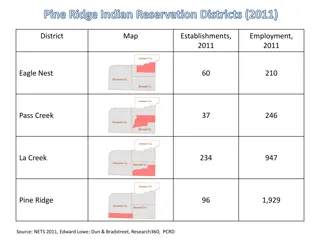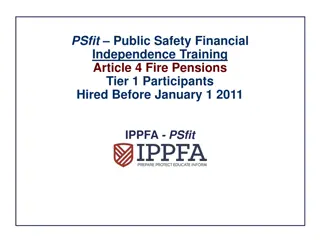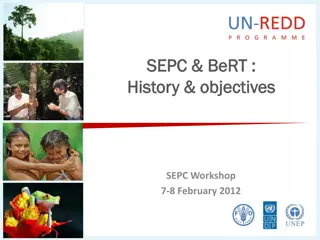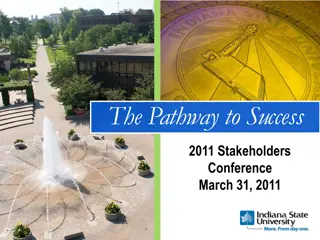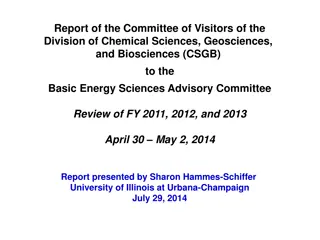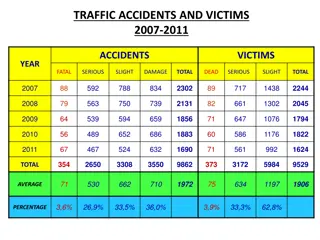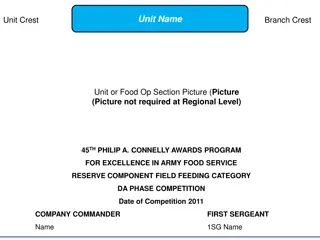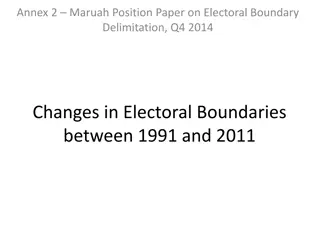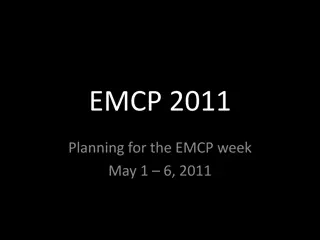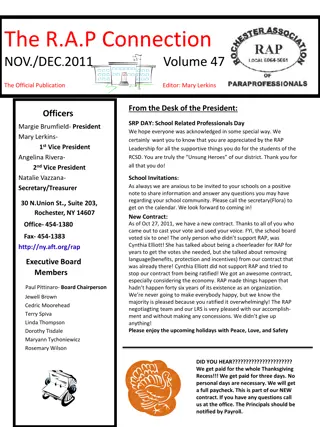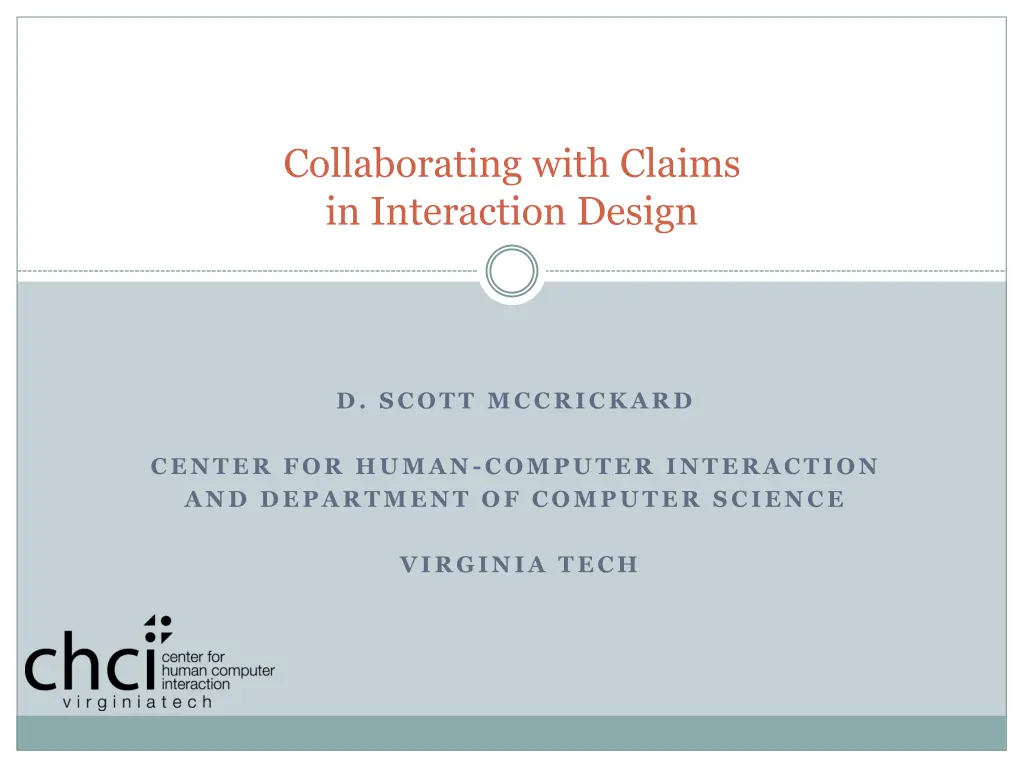
Evolution of Claims in Interaction Design
Explore the evolution of claims in interaction design, from structured knowledge sharing to the use of claims as design rationale units. Discover how claims help in articulating tradeoffs and effects on users in various design scenarios, enhancing the design process in HCI and UE efforts.
Download Presentation

Please find below an Image/Link to download the presentation.
The content on the website is provided AS IS for your information and personal use only. It may not be sold, licensed, or shared on other websites without obtaining consent from the author. If you encounter any issues during the download, it is possible that the publisher has removed the file from their server.
You are allowed to download the files provided on this website for personal or commercial use, subject to the condition that they are used lawfully. All files are the property of their respective owners.
The content on the website is provided AS IS for your information and personal use only. It may not be sold, licensed, or shared on other websites without obtaining consent from the author.
E N D
Presentation Transcript
Collaborating with Claims in Interaction Design D. SCOTT MCCRICKARD CENTER FOR HUMAN-COMPUTER INTERACTION AND DEPARTMENT OF COMPUTER SCIENCE VIRGINIA TECH
Capturing knowledge Many domains involve specialized problems with overlap in technological need potential for benefit from shared design knowledge e.g., in-vehicle computing and support for cognitive disabilities, police patrols, emergency response, mobile health, construction How should knowledge be structured? visions: Nelson s Xanadu, Bush s Memex, Otlet s Mundaneum realities: papers, cases, scenarios, use cases, patterns, artifacts possibilities: Youtube videos, blog posts, Google Docs, Twitter tweets Approach: use claims as a design rationale (DR) knowledge-sharing unit in human-computer interaction (HCI) and usability engineering (UE) efforts
Evolution of claims Claims part of a common structure in rhetoric and argumentation (Toulmin, 1958) Wicked problems and design rationale (Rittel & Webber, 1973) IBIS, PHI, QOC, gIBIS, CodeBroker, Compendium (1970s-2010s) Claims introduced as theory-practice bridge in HCI (Carroll & Kellogg, 1989) often regarded as designer digestible falsifiable hypotheses argued to be best suited to ephemeral, throw-away situations evolved to include formal, structured uses (e.g., Sutcliffe, 1999; Chewar, 2004) featured in a prominent HCI/UE textbook as part of a scenario- claims design approach (Rosson & Carroll, 2002) my focus: claims as evolving, interconnected repositories used in the design process
Claims in HCI and UE A claim is an expression of tradeoffs about an artifact in terms of effects on a user in a given usage scenario the artifact describes some feature of an interface that has cognitive/psychological effects on a user claims are generally grounded in the context of a real or constructed scenario or other story a claim lists upsides/downsides (pros and cons) that reflect the tradeoffs the artifact causes in a user
Claim example Feature: + supports rapid identification of the newest items According to (Greenberg & Rounding 2001), New collage items are always placed on top suggesting users can quickly view new items and track relevance Organizing information using a collage metaphor + links between cards can facilitate user interaction According to (Tomobe 2007), users can discuss their activities on [a collage] intuitively as seen in a workshop run by the author - BUT overlapping items create comprehension problems According to (Greenberg & Rounding 2001), As the number of posted items increases, new elements cover old ones suggesting difficulty in knowing about or finding older items
Hard problems for claims (and DR) Creating [good, relevant] claims start with a set identified by experts through lit review 2. Identifying claims relationships observe connections and associations among claims 3. Making claims accessible present claims in a way that a breadth of designers can use 4. Encouraging use of claims that lead to creating [good, relevant] claims collect the rationale that is generated during design 1.
Identifying claims relationships Human categorization e.g., The Design of Sites (van Duyne, Landay, Hong, 2007) Critical parameters e.g., the IRC model (McCrickard & Chewar, 2003) interruption: reallocation of attention from a primary task reaction: immediate response resulting from stimuli comprehension: information sensemaking and retention analytic or empirical methods can position claims on a 0-1 scale Social computing e.g., claims relationships (Wahid & McCrickard, 2007) fusion/diffusion: designer connection/separation of related ideas mitigation: adding a feature to lessen a downside activities of designers can connect paths of use for claims
Leveraging the masses Collaborative views like Recent and Top 10% & 20% affect use and decision-making Lighted directional path card was created Elevated to green status as more and more people found it in the recent view I used the most frequently used cards as a starting point for my exploration of options in the ideation stage. Yeah, I don t even like allowing [previous use] to influence I mean honestly I could even imagine myself being biased in the other direction. because it is a storyboard, it necessitates thinking about workflow which is something that can get lost a lot especially with somebody who isn t thinking about design all the time.
Making claims accessible Claims capture and connect design knowledge BUT there are still barriers to claims being used particularly for large libraries of claims easy to search, but hard to browse Solution: leverage images as part of visual design accessible to designers (e.g., technologists, UI experts) as well as domain experts (e.g., police officers, emergency personnel) encourages communication among members of a design team intentional deception can initiate creative ideas access to DR encourages thoughtful reflection
Leveraging images Images and imagery images of existing interface claims triggers imagination, inspiration imagery refers to both sets of images and their contextual interpretations targeted for novices (in design or in domain) to understand domain Design rationale as images exploration into the knowledge about design, such as reasoning, to help the process generally requires time, effort, learning curve images help reduce learning costs A sliding effect used to transition within and between notifications + can reliably divert the attention of the user to essential information + increases user knowledge of information with regular usage - causes 40% degradation in primary task performance time
Capturing Design Decisions with PIC-UP Wahid, Branham, Cairco, McCrickard, Harrison 2009
The role of technology in design Free-form formats support designerly processes But technology allows us to capture design rationale for reflection, review, catch-up, search, Seeking middle ground
Ongoing and future efforts Making claims more accessible creating claims for key design areas (mobile, notification) identifying quality claims at an appropriate level of generality using claims sets in classes, design meetings, etc. Identifying relationship models for claims based on content and community Automatic extraction of claims from databases databases can include papers, chat/meeting logs, blogs, case studies, scenario/case libraries Applying approaches to other knowledge repositories
Thanks! Shahtab Wahid Ph.D. at Virginia Tech (2011); now at Bloomberg Christa Chewar Ph.D. at VT (2005); now at the United States Military Academy Jan-Willem Streefkerk TU Delft/TNO other collaborators Steve Harrison, Jason Chong Lee, Jacob Somervell, John M. Carroll, Alistair Sutcliffe, Ali Ndiwalana, and others funding from the NSF (ITR, REU, CRI, EAGER), DoD, Google, Meridium
Questions/Comments Scott McCrickard mccricks@cs.vt.edu people.cs.vt.edu/~mccricks/ mccricks.wordpress.com ?

